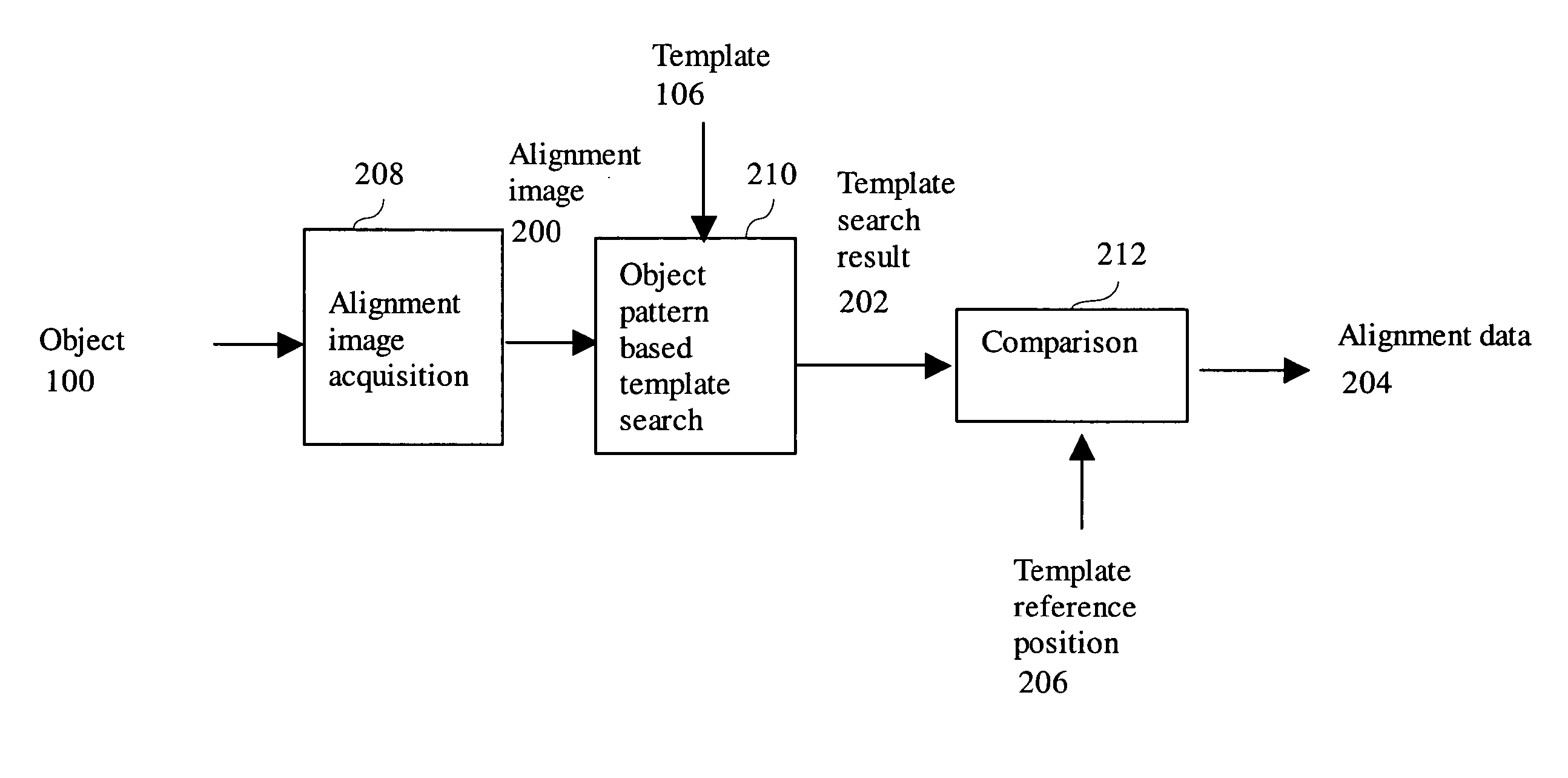Partition pattern match and integration method for alignment
a technology of partition pattern and integration method, applied in image analysis, image enhancement, instruments, etc., can solve the problems of limiting the flexibility of alignment options, increasing system complexity, and acquiring images that exhibit low contrast, so as to improve the yield and improve the yield of template search, and handle large positioning error efficiently
- Summary
- Abstract
- Description
- Claims
- Application Information
AI Technical Summary
Benefits of technology
Problems solved by technology
Method used
Image
Examples
Embodiment Construction
I. Application Scenario
[0040]FIG. 1 shows the processing flow of the template generation for alignment application scenario. As shown in FIG. 1, the object 100 is inputted to the learning image acquisition step 112. The input object 100 is subjected to an object positioning error that is the amount of alignment required in the application. The learning image acquisition step 112 acquires the learning image 102. The learning image 102 should cover all the appearance of the object under maximum possible positioning error. So it could include a composition of multiple images due to the limited size of the sensor (such as camera) view. An automatic object pattern based template generation step 114 performs template generation using the object pattern rather than pre-defined alignment marks and output a template generation result 104. A further template goodness checking step checks whether the template is acceptable 116 using the template generation result 104 and outputs an acceptance ...
PUM
 Login to View More
Login to View More Abstract
Description
Claims
Application Information
 Login to View More
Login to View More - R&D
- Intellectual Property
- Life Sciences
- Materials
- Tech Scout
- Unparalleled Data Quality
- Higher Quality Content
- 60% Fewer Hallucinations
Browse by: Latest US Patents, China's latest patents, Technical Efficacy Thesaurus, Application Domain, Technology Topic, Popular Technical Reports.
© 2025 PatSnap. All rights reserved.Legal|Privacy policy|Modern Slavery Act Transparency Statement|Sitemap|About US| Contact US: help@patsnap.com



